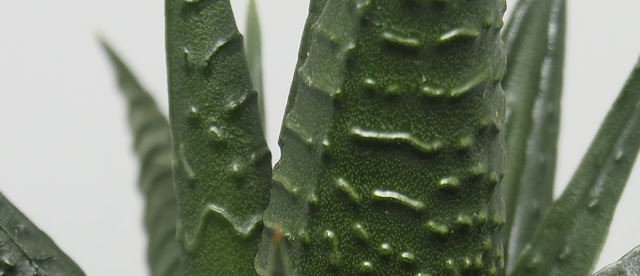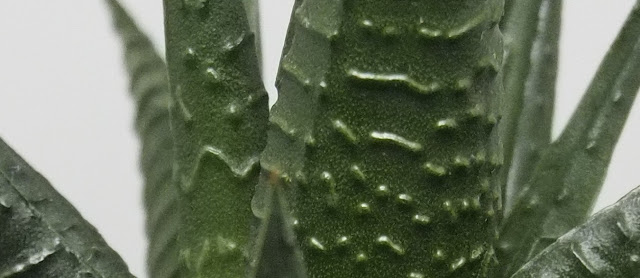E' di questi giorni la cessione del reparto fotografico da parte di Olympus ad un'altra società che porterà avanti questo settore continuando a usare i marchi esistenti sia per i corpi che per le lenti.
La notizia non coglie impreparati, molti marchi storici hanno passato le proprie divisioni fotografiche ad altri perchè non più in grado di reggerle economicamente.
Da appassionato e utilizzatore di Olympus sin dalla om1 analogica non posso che essere dispiaciuto ovviamente ma devo ammettere che forse un cambio ci voleva, le aziende giapponesi sanno sì innovare ma hanno anche un forte attaccamento al passato e alla tradizione e forse un cambio al vertice porterà qualcosa di nuovo oltre all'ostinazione per il solo micro 4\3 che Olympus ha portato avanti negli ultimi anni.
Personalmente mi aspetto una full frame, almeno a livello di progetto, entro metà 2021, sarebbe un bel colpo soprattutto se aderisse al progetto Panasonic come baionetta.
Di sicuro la mia adorata E-5 e la piccola E-M5 II continueranno a sfornare ottimi file a prescindere dalla morte o meno della casa di produzione e quindi una corsa alla vendita e al cambio di corredo sarebbe insensata anche se spero che altri lo facciano per acquistare materiale a basso prezzo.
Non svendete comunque, il marchio esisterà ancora, così come l'assistenza e la produzione, spariranno i prodotti poco redditizi ma personalmente spero di riuscire a prendere una E-M1 III entro fine estate per vivere felice e tranquillo altri 10 anni con le ottiche che già possiedo.
Fotografo Digitale
Mi chiamo Thomas Lucchetti e vivo a Trieste, una piccola ma affascinante città italiana e la mia passione più grande è la fotografia. Ho iniziato quando per la comunione mi regalarono una compatta a pellicola della Kodak per poi passare alla reflex e, dal 2000 iniziai a usare attrezzatura digitale. Nel mio curriculum ho diverse esposizioni a Firenze e Trieste, ho eseguito diversi book fotografici per aspiranti modelle e immortalato matrimoni e battesimi.
sabato 11 luglio 2020
mercoledì 9 ottobre 2019
New technologies and photography
Is there a relationship between the technology used to photograph and the result?
In my experience, yes, there is a close link between what we use and what we get in the end but I go further and I argue that less technological was our beginning and we better make photos at the level of awareness.
I started my photographic journey with the film SLR, then over time I switched to digital reflexes and to follow the mirrorless and I can say without a shadow of a doubt that those who did not take the first two steps certainly know how to take good pictures but do it in how much freezing of the instant he sees on the monitor and not because he has bases behind him. Of this I am certain because I was able to lend old-fashioned cameras to different people asking them to shoot without going to review the result if not at home, at the end of a photo session and as you can imagine the results were horrible because they lacked awareness, they did not know how to set the diaphragm according to the light, the exposure, and I speak of people who with their mirrorless machines or phones are able to create stunning images.
Of course, if we stop at the final result only, we can object that awareness, the technical basis, do not count, because the result is achieved in any case and it is true in part but if there are no bases, if we arrive at the final result only thanks to technology then we don't talk about photography anymore. It would be like putting on the same level a person who after years of training runs 100 meters in 10 seconds and one who does it on an electric scooter at the same time, the finish line is cut by both but the difference is abysmal between the two.
I don't go into neuro-scientific discourses but surely the technology, when it becomes the fundamental part to reach a result, subtracts something from our brain, intrudes in what is the construction that the mind should do to take the right picture in our case and it is not good because it involves relaxation, a lack of stimulation.
I find myself photographing with a 10-year-old digital SLR, with pentaprism and optical vision of the scene, with a mechanical shutter, as close as we can be today to an analogue reflex and I can say without problems that the most beautiful part of the click is between the study of the scene and the shutter noise, a temporal space in which the brain works thinking in a second if the times and the diaphragm are right, where the light comes from and if the exposure is correct.
Today we look through a screen, we see the result live, it is impossible to go wrong, the machine itself tells you that you are wrong and this is a great impoverishment for us that we photograph because it takes away a role that should be fundamental, knowledge.
Today the winner is the one who presents himself with the biggest and most scenographic machine, then that the photographer is an incompetent, it doesn't matter because there will be algorithms to fix his mistakes, once the photographer was considered good because he shot in the dark and the result was guaranteed by the his experience and professionalism.
I'm not saying that progress should not be welcomed, I also used it clearly, but I believe that all those who approach the world of photography must create the basics using old-fashioned models of cameras, they must cut their teeth and learn the technical bases, then, once learned then it will make no difference to shoot with a reflex or a mobile phone but I assure you that the pleasure in doing so will be very different and rewarding.
In my experience, yes, there is a close link between what we use and what we get in the end but I go further and I argue that less technological was our beginning and we better make photos at the level of awareness.
I started my photographic journey with the film SLR, then over time I switched to digital reflexes and to follow the mirrorless and I can say without a shadow of a doubt that those who did not take the first two steps certainly know how to take good pictures but do it in how much freezing of the instant he sees on the monitor and not because he has bases behind him. Of this I am certain because I was able to lend old-fashioned cameras to different people asking them to shoot without going to review the result if not at home, at the end of a photo session and as you can imagine the results were horrible because they lacked awareness, they did not know how to set the diaphragm according to the light, the exposure, and I speak of people who with their mirrorless machines or phones are able to create stunning images.
Of course, if we stop at the final result only, we can object that awareness, the technical basis, do not count, because the result is achieved in any case and it is true in part but if there are no bases, if we arrive at the final result only thanks to technology then we don't talk about photography anymore. It would be like putting on the same level a person who after years of training runs 100 meters in 10 seconds and one who does it on an electric scooter at the same time, the finish line is cut by both but the difference is abysmal between the two.
I don't go into neuro-scientific discourses but surely the technology, when it becomes the fundamental part to reach a result, subtracts something from our brain, intrudes in what is the construction that the mind should do to take the right picture in our case and it is not good because it involves relaxation, a lack of stimulation.
I find myself photographing with a 10-year-old digital SLR, with pentaprism and optical vision of the scene, with a mechanical shutter, as close as we can be today to an analogue reflex and I can say without problems that the most beautiful part of the click is between the study of the scene and the shutter noise, a temporal space in which the brain works thinking in a second if the times and the diaphragm are right, where the light comes from and if the exposure is correct.
Today we look through a screen, we see the result live, it is impossible to go wrong, the machine itself tells you that you are wrong and this is a great impoverishment for us that we photograph because it takes away a role that should be fundamental, knowledge.
Today the winner is the one who presents himself with the biggest and most scenographic machine, then that the photographer is an incompetent, it doesn't matter because there will be algorithms to fix his mistakes, once the photographer was considered good because he shot in the dark and the result was guaranteed by the his experience and professionalism.
I'm not saying that progress should not be welcomed, I also used it clearly, but I believe that all those who approach the world of photography must create the basics using old-fashioned models of cameras, they must cut their teeth and learn the technical bases, then, once learned then it will make no difference to shoot with a reflex or a mobile phone but I assure you that the pleasure in doing so will be very different and rewarding.
sabato 5 ottobre 2019
Olympus E-5 VS Olympus E-M5 Mark 2 test ISO, reflex vs mirrorless iso test
Lo so, è un confronto quasi assurdo ma ho voluto testare 10 anni di evoluzione tecnologica e vedere i risultati così ho preso la Olympus E-5 e la Olympus E-M5 mark 2, impostato per entrambe il filtro anti rumore su OFF, lasciato tutti a parametri a zero e scattato alle varie sensibilità disponibili, la E-M5 2 avrebbe ancora a disposizione i 12.400 e i 25.000 ISO ma mi sono fermato fino a 6400 che erano il massimo disponibile per le E-5.
Ecco i risultati
ISO 100 E-5 + CROP
ISO 200 E-5 + CROP
ISO 200 E-M5 2 + CROP
ISO 400 E-5 + CROP
ISO 400 E-M5 2 + CROP
ISO 800 E-5 + CROP
ISO 800 E-M5 2 + CROP
ISO 1600 E-5 + CROP

ISO 1600 E-M5 2 + CROP
ISO 3200 E-5 + CROP

ISO 3200 E-M5 2 + CROP
ISO 6400 E-5 + CROP

ISO 6400 E-M5 2 + CROP
Iscriviti a:
Post (Atom)

























